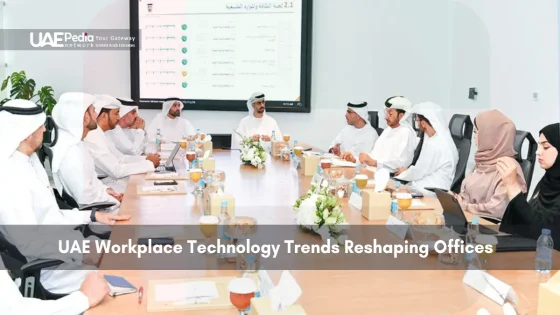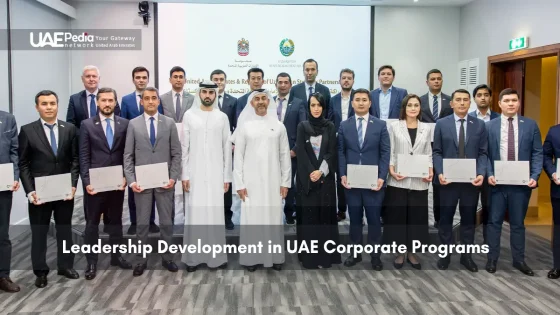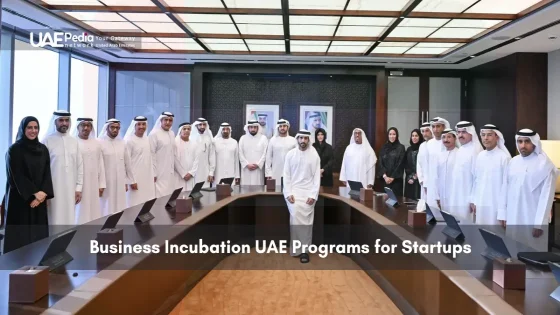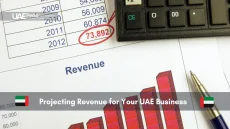What if the traditional 9-to-5 office setup could evolve into something smarter, without losing its human touch? A recent study by The Digital Shift reveals that, according to Accenture, 73% of digitally mature firms report improved business value from data, creating workspaces that feel less like cubicles and more like innovation hubs.
Gone are the days of clunky filing cabinets and disconnected teams. Modern management prioritizes systems that sync data, streamline processes, and empower employees. Take HR platforms: they’re no longer just payroll processors. These tools now analyze engagement patterns, suggest training paths, and even predict retention risks—all while keeping company culture front and center.
One Dubai-based firm slashed onboarding time by 40% using integrated platforms. Another in Abu Dhabi boosted productivity by aligning project management software with real-time feedback loops. The secret? Balancing automation with insights that respect individual workflows.
- Agile environments thrive when digital tools adapt to human needs, not vice versa.
- Data-driven decisions fuel efficiency without sacrificing personal connections.
- Innovative integration turns outdated offices into spaces where creativity meets precision.
How AI Is Shaping Today’s Hybrid Workspaces
Imagine walking into an office where desks rearrange themselves based on who’s coming in that day—or where your coffee order pops up on a screen before you even ask. This isn’t sci-fi; it’s the new reality for teams embracing hybrid models. According to The Digital Shift, a WEF report finds that 80% of executives believe AI will drive innovation in hybrid setups.
The World Economic Forum states that 80% of C‑suite executives believe AI will spark culture shifts toward greater innovation, confirming similar findings in the article Ref.: “AI Is Coming To Work,” World Economic Forum. Jobs and the Future of Work 2025.” [!]
From Traditional Offices to Hybrid Models
Gone are the days of rigid cubicle farms. Cloud-based systems let employees collaborate from desert retreats or high-rise meeting rooms without missing a beat. Take Al Ghurair’s approach: their management teams redesigned workflows using real-time data dashboards. The result? Project approval cycles sped up by 33%.
Cloud Platforms, AI, and HR Systems in Action
Etihad Airways cracked the code on personalized growth. Their HR software now suggests tailored training paths based on performance trends—like a Netflix algorithm for career development. One team saw productivity jump 28% after adopting this system.
- Collaboration without chaos: AI schedules sync hybrid teams across time zones, reducing meeting overlaps by 40%.
- Feedback that sticks: Pulse surveys integrated with project management tools help leaders spot burnout risks early.
- Training that travels: Mobile-first learning platforms let employees upskill during commute times—no classroom needed.
“The magic happens when tools adapt to people, not the reverse,” notes a lead architect from the Intersection of Technology and Talent Management study. Companies mastering this balance report 19% faster adoption of new processes and 42% fewer transition headaches. The secret sauce? Pairing cutting-edge software with human-centered design—because even the most innovative systems need heart.
VERIFIED SOLUTION:
Multiple studies emphasize that combining AI with human‑centred design—focused on augmentation rather than replacement—leads to sustainable organizational transformation and improved retention Ref.: “A Deep Dive into the World Economic Forum’s Future of Jobs Report 2025,” SHRM. [!]
Regional Tech Innovation: How UAE Firms Lead Hybrid Adoption
Picture this: a project manager in Dubai high-fives her teammate in Fujairah through a holographic interface—then both dive into revising a client proposal using real-time co-editing tools. This isn’t tomorrow’s fantasy. According to The Digital Shift, 82% of hybrid teams now rely on platforms that turn digital handshakes into meaningful collaborations.
IMPLEMENTATION CONSTRAINT:
The WEF identifies a key barrier to AI adoption as a lack of workforce skills—about 50% of executives report insufficient skills hinder implementation.“Ref.The Future of Jobs Report 2025,” Workforce Strategies. World Economic Forum.” [!]
Digital Communication and Remote Collaboration
Chat apps with built-in translation features? Check. Video rooms that auto-adjust lighting for professional clarity? Double-check. Companies like Mashreq Bank redesigned their workflows using tools that mimic office banter—virtual “watercooler” channels reduced isolation complaints by 37% last year.
One logistics firm cut email overload by 55% after switching to threaded messaging. Their secret? Prioritizing async updates over meeting marathons. “We’re not just sharing files—we’re rebuilding trust pixel by pixel,” notes a team lead quoted in the report.
Data-Driven HR Management and Employee Insights
HR dashboards now flag burnout risks faster than a sandstorm warning. Take Careem’s approach: their system analyzes work patterns to suggest personalized breaks or skill-building modules. Teams using these nudges saw a 24% drop in turnover.
Training platforms have leveled up, too. A Sharjah-based tech company gamified learning paths—completion rates jumped 63% when courses felt like quests rather than chores. The Digital Shift confirms: “Teams that pair smart software with human intuition unlock 19% higher output per quarter.”
- Feedback loops that flex: Pulse surveys sync with project timelines to capture moods when they matter most
- Growth without gaps: AI-curated learning playlists adapt to individual career maps and company goals
- Culture by design: Recognition bots celebrate milestones across time zones, keeping camaraderie alive
Trends in Employee Engagement and Skill Development
What keeps teams thriving when their office is just a laptop and a latte? A recent Intersection of Technology and Talent Management study found that 61% of high-performing teams treat skill-building like a daily habit, not a yearly checkbox. Let’s unpack how companies redesign growth paths for a world where work happens everywhere.
Adapting to Virtual Work Environments
Remote work erased office walls but introduced new hurdles. Forward-thinking managers now use AI-powered pulse surveys to spot disengagement before it spreads. One Dubai startup slashed meeting fatigue by 44% using “focus hours” tracked through collaboration tools. Their secret? Pairing data with weekly virtual coffee breaks where agendas are banned.
“read more: UAE Talent Management Strategies for Retention“
Continuous Learning and Upskilling Initiatives
Gone are the days of one-size-fits-all training. Modern platforms analyze individual strengths like fitness apps track steps. A logistics company cut onboarding time by 30% using AI-curated learning paths. “It’s like having a career coach in your pocket,” says an HR lead quoted in the study.
| Strategy | Tools Used | Impact |
|---|---|---|
| Personalized skill paths | AI-driven LMS platforms | +28% course completion |
| Virtual team-building | Gamified collaboration apps | 37% fewer isolation reports |
| Real-time feedback loops | Integrated survey tools | 19% faster issue resolution |
Three game-changers for modern teams:
- Microlearning wins: Bite-sized lessons during commute times boost retention by 41%
- Culture connectors: Recognition bots celebrate milestones across time zones
- Growth grids: Skills dashboards help employees map their next career leap
As one HR innovator said, “The best training programs don’t just fill gaps—they spark curiosity.” Companies blending innovative tools with human touchpoints report 33% higher innovation rates. After all, potential thrives where learning never stops.
Smart Office Solutions and Workspace Management
What if your office could sense when a meeting room is too crowded and automatically book a larger space? That’s happening right now in buildings where smart sensors whisper to air conditioners, lighting systems, and desk booking apps. A multinational bank recently cut energy costs by 31% using these tools, proving efficiency doesn’t have to feel robotic.
“read more: UAE Work Technology Governance Framework and Compliance“
Integrating IoT and Smart Building Technologies
Picture motion-sensitive lights that dim when rooms are empty. Or trash bins alerting janitorial teams before they overflow. These aren’t sci-fi gadgets but everyday tools in spaces like HSBC’s Dubai innovation hub. Their system reduced paper waste by 19% last year by tracking real-time supply usage.
One tech giant redesigned its headquarters using occupancy data. Heat maps revealed 40% of desks sat unused daily. Now, flexible zones adjust based on team sizes—no more ghost-town cubicles. “It’s like Tetris for office layouts,” quips a facilities manager from the project.
Optimizing Space Utilization for Cost Savings
Why pay for square footage you rarely use? Innovative platforms like Ecobook analyze foot traffic patterns to suggest workspace downsizing or expansions. Using these insights, a logistics company saved $220k annually by reconfiguring storage areas.
Three ways data transforms real estate decisions:
- Desk hoteling made easy: Employees reserve workspaces via apps, reducing empty seats by 57%
- Energy sleuths: HVAC systems learn usage habits, trimming bills without comfort compromises
- Security with smarts: Access logs sync with attendance data to flag unusual activity instantly
The Digital Shift notes, “Buildings that listen and adapt see 23% higher employee satisfaction scores.” When walls learn, people thrive.
“Read also: UAE Workplace Technology Trends Reshaping Offices“
Looking Ahead: Future Implications and Workplace Success
What if your desk knew you needed a mental break before you did? Tomorrow’s tools won’t just streamline tasks—they’ll anticipate needs. Surveys show 84% of executives plan to prioritize adaptive systems that balance productivity with well-being. The key? Designing environments where data fuels decisions without drowning out human intuition.
Security and resource allocation will shape success. Teams using real-time analytics resolve challenges 35% faster, while encrypted collaboration tools reduce data risks by half. One study notes: “Companies thriving in 2025 will treat security protocols like oxygen—invisible but essential to every operation.”
Security risks escalate in hybrid and AI-driven workspaces—WEF notes that while encryption reduces data risk by half, regulation gaps and skill shortages pose compliance hazards Ref.: “50% of Firms to Shift to AI by 2030, WEF Warns of Digital Risks,” Forbes. [!]
Continuous innovation isn’t optional. Firms investing in AI-driven training see 47% higher workforce retention. Think of it as upgrading a car mid-drive: systems evolve as roads change. Leaders who pair cutting-edge technologies with empathy will unlock what surveys call “the loyalty multiplier”—engaged employees who stick around because growth feels personal.
Read More:
Here’s the playbook: automate repetitive tasks, but let creativity steer. Protect information without paralyzing workflows. And remember—every tool should serve people first. As one CEO quipped, “The best future-proof strategy? Build bridges between spreadsheets and heartbeats.” Ready to cross?
Hybrid setups blend remote flexibility with in-person collaboration—think cloud-based tools like Microsoft Teams for virtual meetings paired with smart booking systems for shared desks at ADNOC HQ or Dubai’s DIFC hubs. It’s about balancing employee preferences with operational needs.
From chatbots handling routine queries at Emirates Group to predictive analytics tracking employee sentiment at Mubadala, AI streamlines recruitment, performance reviews, and retention strategies. It’s less about replacing humans and more about enhancing decision-making with real-time data.
Absolutely! Smart sensors in offices like those at Masdar City optimize energy use by adjusting AC based on occupancy, while space-utilization tools in co-working spaces like Nook cut rental waste. These tech-driven efficiencies often show ROI within 12–18 months.
Many adopt zero-trust frameworks—Etihad Airways uses VPNs and encrypted platforms for global crews, while banks like FAB implement multi-factor authentication. Regular cybersecurity workshops also keep distributed teams alert to phishing risks.
Yes—Abu Dhabi’s Hub71 partners with Coursera for AI literacy courses, and Dubai Future Academy offers metaverse training. Employers increasingly tie promotions to certifications in automation tools or data analysis, aligning growth with innovation.
Watch for AI-powered “office twins” simulating layout changes in real-time, plus AR tools for immersive onboarding. Sustainability will drive adoption too—think solar-powered smart buildings and apps that track carbon footprints per meeting room booking.



















